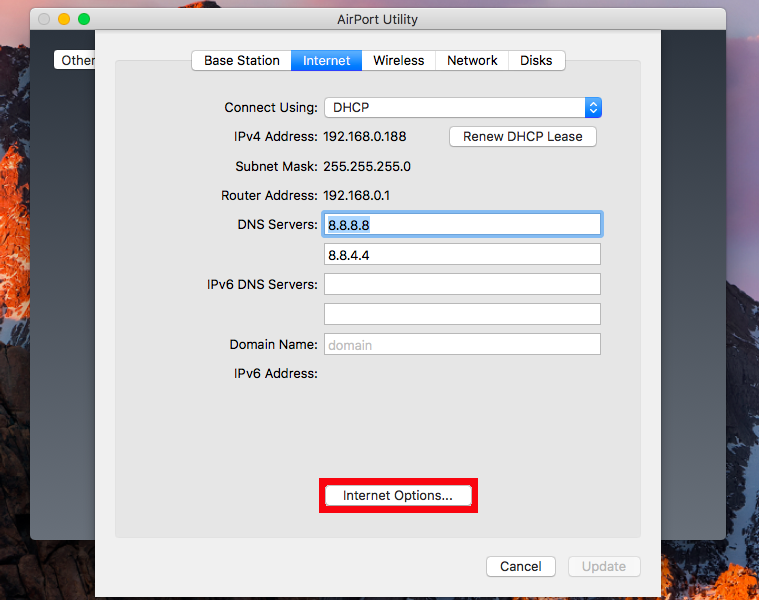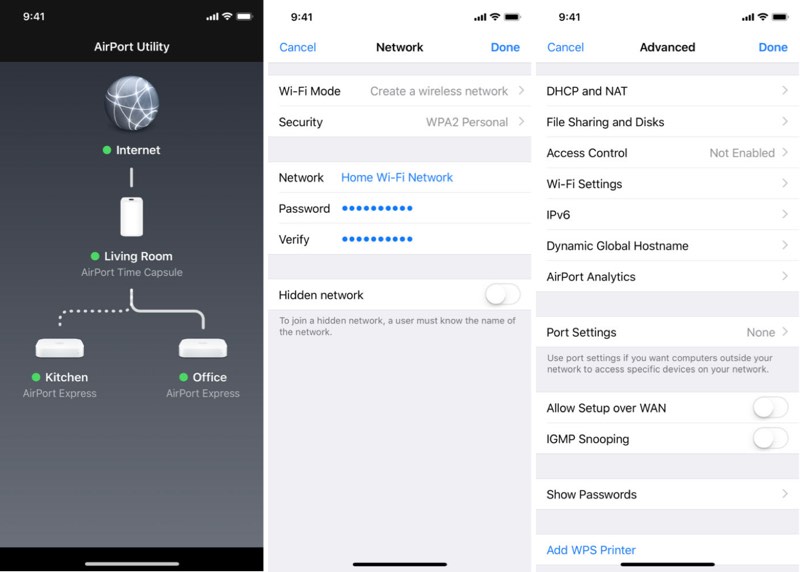


The AirPort Utility software comes loaded with Mac OS X 10.9 (Mavericks) through 10.13 (High Sierra), so you dont need to download it on those operating systems. The AirPort Admin Utility for Graphite and Snow for Mac OS X 10.4 or later software supports the original Apple AirPort Graphite and Snow (Dual Ethernet) Base Stations.
#Airport utility mac os x install
The tools can also provide a wealth of additional raw data as well. If you dont already have the AirPort Utility software installed, install it from the CD that came with the AirPort Express, or download it from Apples website. Sudo ln -s /System/Library/PrivateFrameworks/amework/Versions/Current/Resources/airport /usr/local/bin/airportīetween running airport -s (which shows the BSSID of every Wi-Fi network one’s Mac can pick up) and airport -I (which shows the BSSID of my currently connected network), I found what I need. Since I’m on Catalina, I first ran this command to easily use the “airport” command in the Terminal: It is named “airport” since Apple’s Wi-Fi settings used to be referred to as “Airport” in previous versions of Mac OS X (it was changed prior to the macOS rename) to match Apple’s Airport Wi-Fi hardware. Since I’m on a Mac, I needed to find a way to run a similar command using Terminal on the Mac.Įnter “airport”, Apple’s command-line wireless utility. Netsh wlan show networks mode=Bssid | findstr “BSSID” I tried to connect to my modem via the cable. Hi, I am having a strange problem with my mac and my home wifi system. On Windows, it can be done running PowerShell as Admin and running this command: AirPort Utility 6.0 for Mac OS X Lion Released with iOS Interface Posted by: David Mendez in Mac OS, Troubleshooting. I had to locate the BSSID of Wi-Fi networks for a Microsoft Teams deployment.


 0 kommentar(er)
0 kommentar(er)
